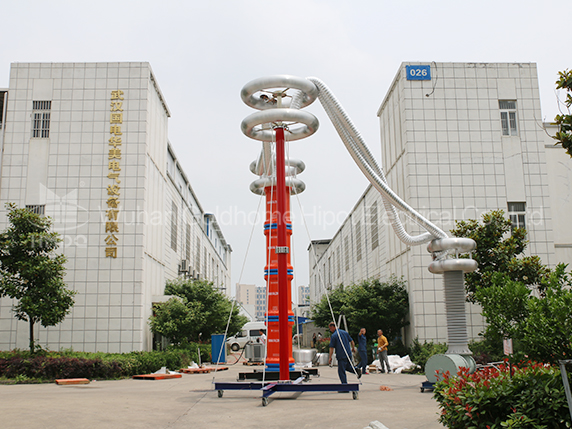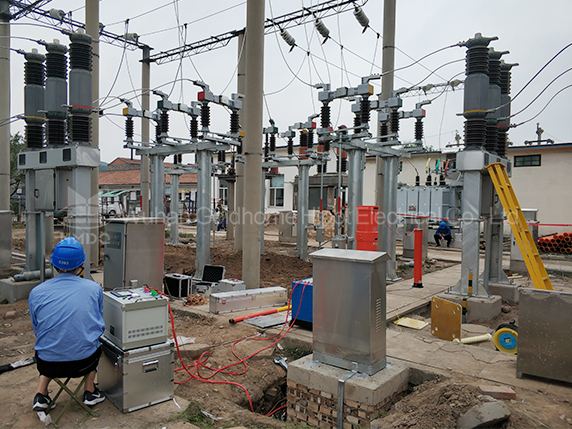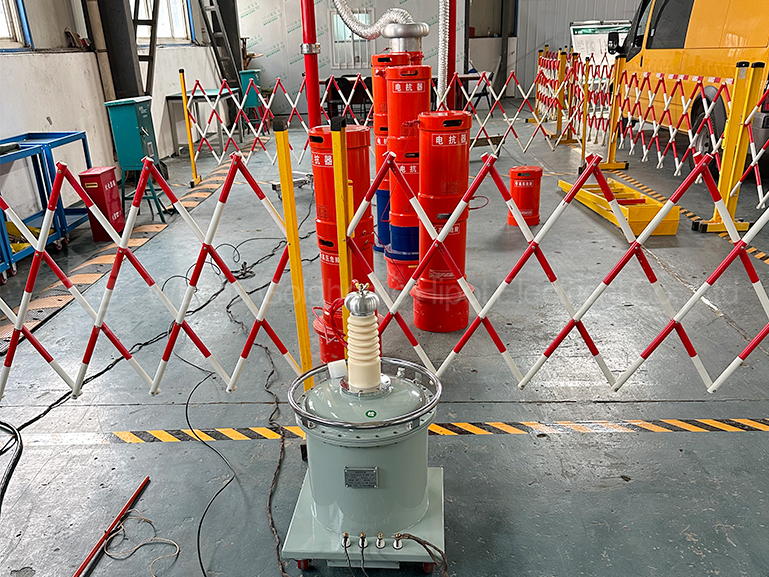What is the principle of the Variable frequency resonant test system

The Variable frequency resonant test system utilizes the principle of series resonance. It uses an excitation transformer to excite the series resonant circuit and adjusts the output frequency of the variable frequency power supply to make the inductance L and the capacitance C in the circuit resonate. Finally, the excitation output voltage is adjusted to achieve the desired test voltage.
According to the principle diagram, when the inductive reactance and the capacitive reactance in the series circuit are equal, the magnetic field in the inductive reactance and the electric field in the capacitive reactance can interact and compensate each other. The reactive power required by the test product is supplied by the reactance, and the power factor of the control circuit is 1.0. This means that the working voltage of the power supply is in phase with the input current of the resonant circuit, and the voltage drop across the inductance is equal to the voltage drop across the capacitance but in opposite phase.
When XL=XC, which is ωL=ωC, the resonant frequency of the circuit, if the LC parameters are fixed, adjusting the power supply frequency to be equal to the resonant frequency can produce resonance. At this time, the current flowing through the test product and the voltage across the test product are:
I=U/(R+j(XL-XC))=U/R
UC=-jIXC=-jQU
Where Q is the quality factor of the resonant circuit.
Since the supply voltage and current are in phase, the input power is purely active power:
P=UI=I^2*R
During resonance, the reactive power on the load capacitance C is:
This test method is widely used for large power transformers, cables, gas-insulated switchgear (GIS), power capacitors, and other high-voltage, high-capacity power equipment, as well as other insulation withstand voltage test projects.
The function of the voltage divider capacitor (also known as the shunt capacitor) is to:
a) Divide the voltage: used for high-voltage measurement as a voltage divider capacitor.
b) Divert the current: the resonant device, within the rated load range, works with the test product to meet the working requirements at arbitrary frequencies such as variable frequency, double frequency, and power frequency.
c) Work together with the test product's capacitance to form a resonant capacitance.
According to the principle diagram, when the inductive reactance and the capacitive reactance in the series circuit are equal, the magnetic field in the inductive reactance and the electric field in the capacitive reactance can interact and compensate each other. The reactive power required by the test product is supplied by the reactance, and the power factor of the control circuit is 1.0. This means that the working voltage of the power supply is in phase with the input current of the resonant circuit, and the voltage drop across the inductance is equal to the voltage drop across the capacitance but in opposite phase.
When XL=XC, which is ωL=ωC, the resonant frequency of the circuit, if the LC parameters are fixed, adjusting the power supply frequency to be equal to the resonant frequency can produce resonance. At this time, the current flowing through the test product and the voltage across the test product are:
I=U/(R+j(XL-XC))=U/R
UC=-jIXC=-jQU
Where Q is the quality factor of the resonant circuit.
Since the supply voltage and current are in phase, the input power is purely active power:
P=UI=I^2*R
During resonance, the reactive power on the load capacitance C is:
This test method is widely used for large power transformers, cables, gas-insulated switchgear (GIS), power capacitors, and other high-voltage, high-capacity power equipment, as well as other insulation withstand voltage test projects.
The function of the voltage divider capacitor (also known as the shunt capacitor) is to:
a) Divide the voltage: used for high-voltage measurement as a voltage divider capacitor.
b) Divert the current: the resonant device, within the rated load range, works with the test product to meet the working requirements at arbitrary frequencies such as variable frequency, double frequency, and power frequency.
c) Work together with the test product's capacitance to form a resonant capacitance.



